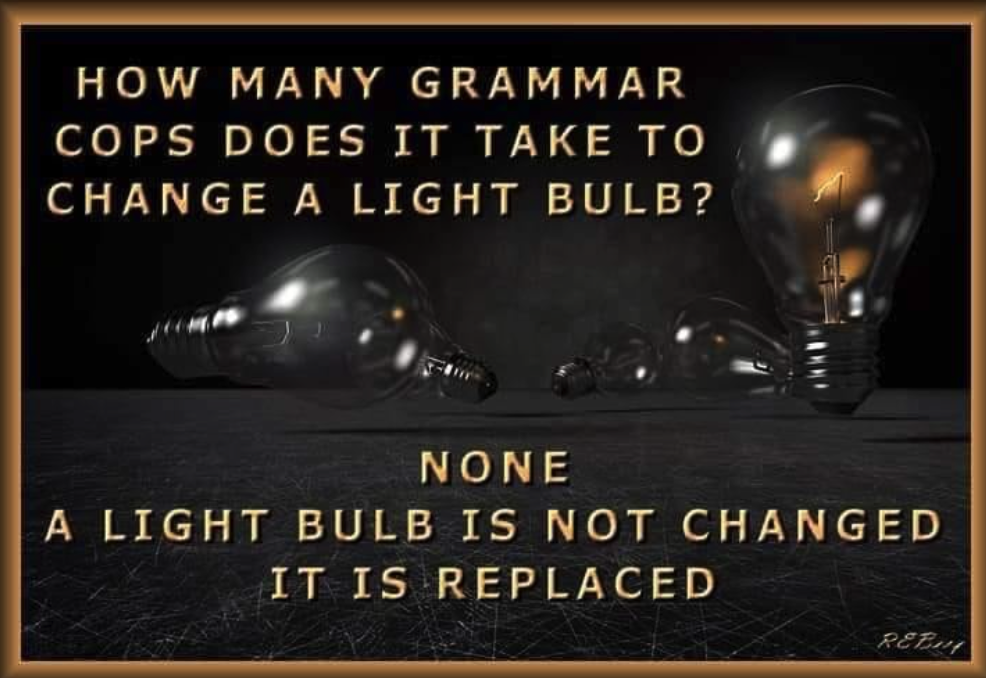

Story structure is a HUGE deal in all stories. The last couple of posts, I’ve mentioned memoirs and how they can utilize a variety of structures. This said, there are so many variegations for the memoir, that I just can’t do them all justice here.
Since I am at least sharp enough to know when to defer to people much smarter than me…AND because I am #1 at HUMBLE…
At the end of the post, I’ll give y’all some links to people who ARE memoir experts and can do a much better job explaining all the structural styles available.
This said, if you’ve read my last two posts The Quest: The Hero’s Journey Meets Memoir and Narrative Style: The Heart of Storytelling we didn’t ONLY talk about memoirs. Rather, we discussed where some fundamentals for writing great memoirs apply across the board to other types of storytelling.
Whether we’re writing a memoir, novel, short story, essay, or even screenplays…structure matters.
If we keep starting out with great ideas that ultimately end up haunting our hard drives unformed and unfinished?
Structure.
Or, maybe we finish books, but no one seems to want to read them. It could be the glut in the market. OR it could be that the core idea is GOLD, but the structure isn’t such that it fully reveals what our story has to offer.
There are many reasons our writing might be stalling, stumbling, fumbling or failing. Yet, in my 20 years editing? It’s almost always, always a problem with story structure.
Story Structure and FLOW


The first obstacle we authors face—when writing anything—is subtly embedding a strong enough hook. How can we at least get the readers’ attention when there is so much cool stuff on YouTube to watch?
Yet, even when we hook the reader, the next challenge (and possibly the toughest) is to coax them into a state that psychologist Mihaly Csikszentmihalyi referred to as “flow.”
In the Wired article Go With the Flow, Csikszentmihalyi defined flow as, “Being completely involved in an activity for its own sake. The ego falls away. Time flies. Every action, movement, and thought follows inevitably from the previous one, like playing jazz. Your whole being is involved, and you’re using your skills to the utmost.”
Anyone who’s ever started a book, planning to simply read a few pages…only to end up still awake at three in the morning because we just NEEDED TO KNOW HOW IT ENDS!
That’s flow.
Flow is intentional and inherent in the design.
Fail to Plan, Plan to Fail


Structure, sadly, is probably one of the most overlooked topics even though it’s the most critical.
Why? Because structure is for the reader (even with memoirs). The further an author deviates from structure, the less likely the reader will be lulled into flow.
When structure is missing, incomplete, or flawed, the easier it is for readers to become confused, frustrated and finally give up. Structure isn’t simply for function, but for beauty as well (refer to jacked up Ikea fail above).
Sadly, too many emerging writers want to get to the ‘fun’ stuff (for them). Pretty prose, descriptions, characters, using new words are great imaginative play. Unfortunately, that’s all it is. Play.
Structure can be tough to wrap your mind around and, to be blunt, most pre-published writers don’t understand it. They rely on wordsmithery and hope they can bluff past readers with their glorious prose.
Yeah, no. Prose isn’t plot.
Great Stories: Back to the BASICS


Today we are going to go back to some story structure basics, before we ever worry about things like Aristotelian structure (non-linear structure), turning points, rising action, and darkest moments, etc.
Now before you guys get the vapors and think I’m boxing you into some rigid format that will ruin your creativity, nothing could be further from the truth.
Plot is about elements, those things that go into the mix of making a good story even better.
Structure is about timing—where in the mix those elements go.
When you read a novel that isn’t quite grabbing you, the reason is probably structure. Even though it may have good characters, snappy dialogue, and intriguing settings, the story isn’t unfolding in the optimum fashion. ~James Scott Bell from Plot and Structure.
Structure holds stories together and helps them make sense and flow in such a way so as to maximize the emotional impact by the end of the tale. When it comes to memoirs, structure directly relates to the TYPE of memoir we want to write (more on that later).
The Micro Scale of Story Structure


We’re going to first ZOOM IN and place the novel under a literary electron microscope.
The most fundamental basics of a novel are cause and effect. Super basic. An entire novel can be broken down into cause-effect-cause-effect-cause-effect (yes, even literary works). All effects must have a cause and all causes eventually must have an effect (or a good explanation).
I know that in life random things happen and people die for no reason. While life often IS stranger than fiction, fiction ain’t life.
So if a character drops dead from a massive heart attack, that ‘seed’ needs to be planted ahead of time.
Villains don’t just have their heart explode because we need them to die so we can end our book. Our MC can’t suddenly discover a journal that EXPLAINS EVERYTHING in the middle of Act Two because we failed to properly plot an actual story and painted ourselves in a literary corner.
Even in memoir, there needs to be a sense of cause-effect-result or readers will struggle to not only follow along, but to “get” the point of what they’re reading.
Now, all these little causes and effects clump together to form the next two building blocks we’ll discuss—the scene & the sequel (per Jack Bickham’s Scene & Structure). Many times these will clump together to form your ‘chapters.’
Order Matters: Scene & Sequel


Word order matters, or we end up with confusion (refer to above image).
Structure’s two main components, as I said earlier, are the scene and the sequel.
The scene is a fundamental building block of fiction. It is physical. Something tangible is happening. The scene has three parts (again per Jack Bickham’s Scene & Structure, which I recommend every writer buy and read and study).
- Statement of the goal
- Introduction and development of conflict
- Failure of the character to reach his goal, a tactical disaster
Goal –> Conflict –> Disaster
The sequel is the other fundamental building block and is the emotional thread. The sequel often begins at the end of a scene when the viewpoint character has to process the unanticipated but logical disaster that happened at the end of your scene.
Emotion–> Thought–> Decision–> Action
Link scenes and sequels together and flesh over a narrative structure and you will have a novel readers will enjoy.
Oh but Kristen you are hedging me in to this formulaic writing and I want to be creative.
Understanding structure is not formulaic writing. It is a story delivery system that makes sense on a fundamental level.
Formulaic writing refers to the execution of story structure. It’s a reflection of skill, or rather, lack thereof. So relax, structure is your friend. It will make writing and finishing books easier, and it comes with the added bonus of not confusing the bejeezus out of the readers.
The Macro Scale of Story Structure


Yes, I know I began with the micro scale of stories. Why? Because I am being INTENTIONAL.
The macro scale (story structure) can take on a lot of different forms. With novels, we can use the tried-and-true Aristotelian three act structure, a four-act or five-act structure, parallel timeline structure, non-linear structure, looping timeline structure, etc., etc., etc.
The macro story structure we choose should be deliberate. For instance, most novels use traditional three-act structure. Beginning, middle, end. Bada bing, bada boom. Why?
Because it is what most readers are familiar with and it’s the easiest to read and also the easiest to write well.
Non-linear structure uses the flow of time as a literary device. It IS a cogent and deliberate design. What it IS NOT? A crap ton of flashbacks thrust into the story to EXPLAIN.
In fact, non-linear structure should do the exact opposite. Executed properly it should intensify conflict/tension instead of diffusing it.
For instance, non-linear timelines are fabulous when we want to employ an unreliable narrator.
Gone Girl , Girl on a Train, and Fight Club all shift back and forth in time, but every shift only serves to ratchet the tension higher, to generate even MORE questions. Over the course of the story, the writer might sprinkle in answers, but usually they’re incomplete.
And, every ‘answer’ usually sparks three new questions to take its place.
The reader has to KEEP reading to know WTH is going ON! With nonlinear structure, the story picture will only come into sharp relief in the final chapters of the story.
I LOVE non-linear structure, but it takes a lot of skill to write and, unlike traditional three-act structure, it has a comparably smaller fanbase.
Micro Meets Macro


Why did I talk about the tiny bits of story first? Because regardless which narrative structure we choose for our novel, those micro story structure elements will remain the same.
We’ll still be using scenes and sequels.
Scene: Goal–>Conflict–>Setback/Disaster
Sequel: Emotion–> Thought–> Decision–> Action
These micro elements are what keep readers turning pages. Every sentence becomes a hook that propels the reader to the next sentence and the next. Every chapter should end in a way that compels the reader to keep plunging ahead to get the answers they seek.
What About Memoir?


Some memoirs, as I mentioned, are structured in ways that are very similar to a novel. Excellent memoirs adhere to the same principles that make for excellent novels.
They have a theme, are written for the readers (not the author). They’re structured in a way that ideally lulls readers into a flow state as quickly as possible. Strong memoirs have potent author voice that resonates with the readership. On and on.
This said?
There’s a LOT that goes into writing memoirs, so I’ve gathered a list of what I felt was the best information from those who have FAR more expertise than I do.
Types of Memoir Structure by Dave Hood
How to Structure Your Memoir via Episodia
How to Structure a Memoir That Works by Marion Roach Smith
How to Write a Memoir: 7 Creative Ways to Tell a Powerful Story by Brooke Warner at The Write Life
Literary Structure & Why It Matters to Your Memoir
How to Write Your Memoir With Fun Easy Lists over at my awesome pal Jane Friedman’s site
I could list a dozen more, but this is more than enough to get you started and keep you going for a while. There are plenty of sites out there that can help you learn more about memoir, and many offer templates, books and classes.
Take advantage!
In the end, structure isn’t sexy. You know what else isn’t sexy? Rebar. But without rebar, buildings, bridges and highways collapse. Lots of needless agony, screaming, and suffering…
Kind of like all those books we never could finish *wails*
Structure is that hidden element that holds everything together so our stories can SHINE. When we fully understand how all the pieces go together? THAT is when we can start doing some seriously creative and crazy stuff!
I LOVE HEARING FROM YOU!
I hope today’s lesson helped. I’d wanted to at least introduce y’all to the memoir, because it’s not only an increasingly popular genre, but many of you have stories that need to be preserved.
For the rest of us who don’t dare write a memoir until everyone we’d write about dies? We’ll just have to fictionalize them and put them in a novel 😀 .
What are your thoughts? Questions? Suggestions for posts?
If you have other resources for memoir, feel free to post in the comments so long as we don’t get too spammy.
I read through as many articles as I could and chose the ones that didn’t seem to be trying to mainly sell stuff.
Anyway…
I love hearing from you!
